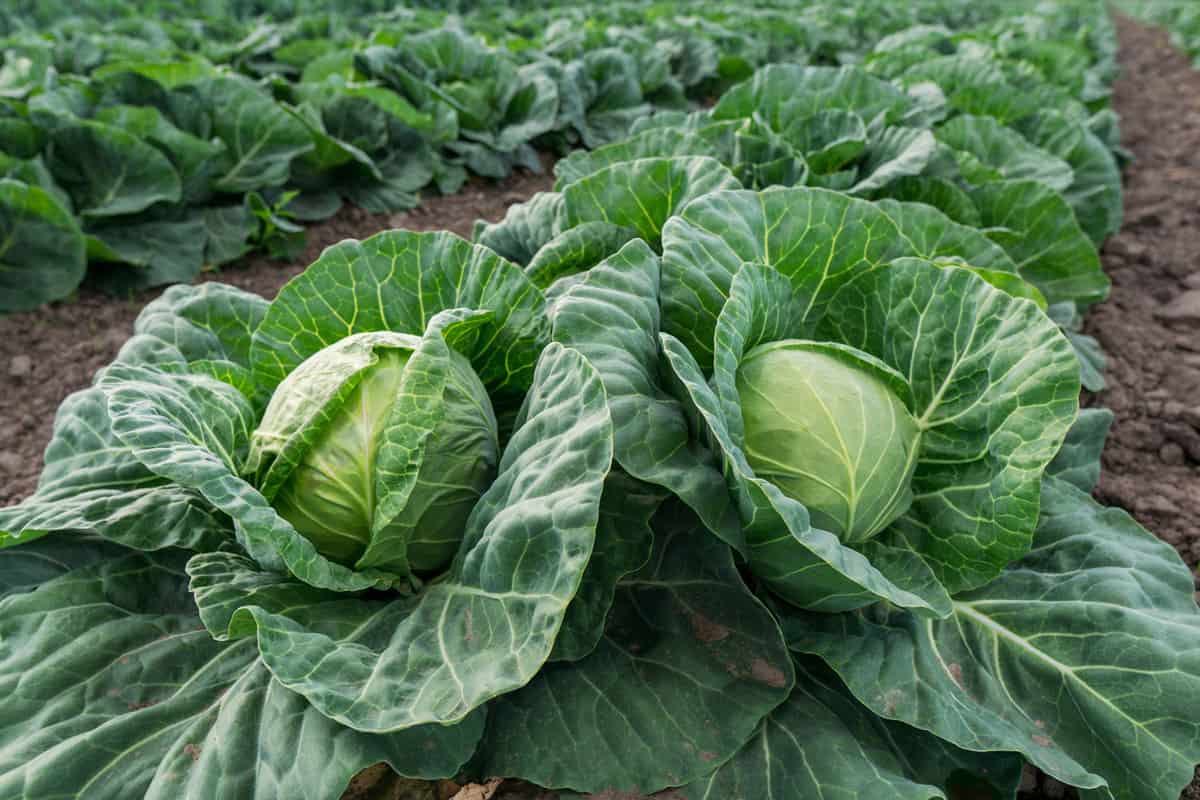Have you ever wondered if lettuce and cabbage are related?
They look pretty similar, and they are both leafy greens often used in salads and other dishes.

However, despite their similarities, they belong to different plant families.
Lettuce is part of the Asteraceae family, including other plants like artichokes and dandelions.
On the other hand, cabbage is part of the Brassicaceae family, which includes other vegetables like broccoli and Brussels sprouts.
Despite these differences, lettuce and cabbage are high in fiber and can be part of a healthy diet.
So, are lettuce and cabbage related? The answer is no, they are not. They may look alike and have similar uses in the kitchen, but they come from different plant families.
Understanding the differences between these two vegetables can help you make informed choices about what you eat and how you cook with them.
Understanding Lettuce and Cabbage
Overview of Lettuce
Lettuce is a leafy vegetable that is often used in salads and sandwiches.
Lettuce is a good source of vitamins A and K and is also high in water content, making it a hydrating food.
There are several types of lettuce, including iceberg, romaine, and butterhead. Each type has its own unique flavor and texture.
Iceberg lettuce is crisp and mild, while romaine lettuce is slightly bitter and has a more robust flavor. Butterhead lettuce is soft and buttery, with a milder flavor than other types of lettuce.
Overview of Cabbage
Cabbage is a cruciferous vegetable often used in soups, stews, and salads.
Cabbage is a good source of vitamins C and K and is fiber-rich.
There are several types of cabbage, including green, red, and savoy.
Green cabbage is the most common type and has a mild, slightly sweet flavor. Red cabbage has a more robust flavor and is often used in slaws and pickled dishes. Savoy cabbage has a wrinkled texture and is often used in stir-fries and soups.
Comparison Guide
| Aspect | Lettuce | Cabbage |
|---|---|---|
| Family | Asteraceae | Brassicaceae |
| Flavor | Mild | Strong |
| Nutrients | Vitamins A and K, water | Vitamins C and K, fiber |
| Types | Iceberg, romaine, butterhead | Green, red, savoy |
| Calories per cup | 5-10 calories | 20-25 calories |
| Taste | mild, slightly sweet flavor and a crisp texture | stronger, slightly bitter flavor and a denser texture |
| Appearance | leaves are typically thinner and more delicate than cabbage leaves, and come in a variety of shapes and colors, including green, red, and purple | leaves are thicker and more sturdy and are typically green or purple in color |
The Botanical Connection
Plant Characteristics
Despite their differences in family and genus, lettuce and cabbage share similar plant characteristics.
Both are cool-season crops that prefer well-drained soil and cooler temperatures. They are both annual plants, meaning they complete their life cycle in one growing season.
Lettuce and cabbage also have similar nutritional profiles, low in calories and high in fiber, vitamins, and minerals. However, cabbage tends to be higher in some nutrients like vitamin C and vitamin K.
In terms of appearance, lettuce and cabbage may look similar at first glance, but there are some key differences.
Lettuce leaves are typically more delicate and have a softer texture, while cabbage leaves are thicker and more robust. Cabbage forms a dense head, while lettuce leaves grow in loose rosettes.
While lettuce and cabbage may share some similarities, they are ultimately different plants with distinct characteristics and nutritional profiles.
Culinary Uses
Lettuce in Cuisine
Lettuce is a famous leafy green that is used in various dishes across the world.
Lettuce has a mild flavor and a crisp texture, which makes it a great addition to many dishes.
Each type of lettuce has its own unique flavor and texture, so it's essential to choose the right kind of lettuce for your dish.
Cabbage in Cuisine
Cabbage is a versatile vegetable that is commonly used in many different cuisines around the world.
It can be eaten raw or cooked and is often used in soups, stews, and stir-fries. Cabbage has a slightly sweet and earthy flavor.
Can I Mix Lettuce and Cabbage in Salads?
Yes, you can mix lettuce and cabbage in salads. Many salad recipes call for a combination of both lettuce and cabbage. Incorporating lettuce and cabbage can add a variety of textures and flavors to your salad.
Just be sure to choose the suitable lettuce and cabbage for your salad.
For example, if you make a coleslaw, you may want to use green cabbage instead of red cabbage because it has a milder flavor.
Final Thoughts
So, while lettuce and cabbage may look similar and have overlapping health benefits, they are unrelated to plant species.
Whether you prefer to use lettuce or cabbage in your meals, choosing fresh, high-quality produce and washing it thoroughly before consuming it is essential. Additionally, vary your vegetable intake to ensure you get a wide range of nutrients and health benefits.
Adding lettuce and cabbage to your diet can be a great way to boost your health and add some variety to your meals. So, experiment with different recipes and preparations to find what works best for you!
Discover these related posts:
